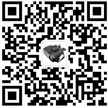Telescopes are important and indispensable tools for every outdoor enthusiast. Choosing a satisfactory telescope is a very important issue for users, but many tourists do not have much knowledge about the performance of telescopes and how to choose telescopes, which leads to the fact that the purchased telescopes have not much use or the effect is not satisfactory. Beginners often do not have the identification of telescopes and related optical knowledge, especially in the current reality that the market is flooded with a large number of inferior telescopes. How should beginners choose telescopes?


Key points for choosing telescopes:
1. Multiples The higher the multiples of a telescope, the better. Choose according to your actual needs. (For handheld telescopes, 6-10 times is the best choice). Telescopes with too high multiples will have obvious image jitter during observation, poor observation effect, and difficulty in normal observation.
2. Objective lens aperture. The objective lens aperture is the lens for observing objects. The aperture of the telescope is the channel for external light to enter the telescope. Generally speaking, under the same conditions of magnification, prism material, coating, processing and assembly accuracy, the larger the aperture of the telescope's objective lens, the higher the image brightness, the higher the resolution, and the better the optical performance. However, the larger the aperture of the objective lens, the larger the size of the telescope.
3. The structure of the telescope. The telescope structure is divided into Porro type and ridge type. The Porro structure is simple and has high light transmittance. The telescopes we generally see are Porro structures, but the size of Porro structure telescopes is relatively large. The advantage of the ridge structure is that the volume of the telescope can be made very small, but the structure is relatively complex, and the light transmittance is 5% lower than that of Porro. Generally, pocket telescopes use the ridge structure.
4. Field of view. The field of view of a telescope is generally expressed in ***/**** or degrees. For example, "114M/1000M" means that at a distance of 1000 meters, the range that can be seen through this telescope is a circle with a diameter of 114 meters, which is converted into an angle of 6.5 degrees.
5. Exit pupil diameter and distance. The exit pupil diameter is the size of the spot formed by the image through the telescope eyepiece. Generally speaking, telescopes with an exit pupil between 2.5 mm and 4 mm are more suitable for daytime use. Telescopes between 4 mm and 7 mm can still be used for observation in daytime and low-light environments.

This is the telescope I just bought some time ago. It is an American brand, Onick 8310C 8x30 with a compass! They also have an identical one without a compass. Haha! Is it high-end? ! It feels good when I use it for the first time~

Like mine, it is 8 times, and the objective lens diameter is 30mm. This size is suitable for most people, and the viewing comfort is also very good. This one is a Paul structure, and the light transmittance is very good, awesome! And it also has an electronic compass.

The electronic compass has a graticule that can measure azimuth, altitude, and target distance:
When we use a telescope to observe, we can easily read the azimuth of the target through the right eyepiece. Each division of the compass is 1°. When the observed target is due north of you, the compass displays 360° and follows a clockwise relationship, that is, 90° indicates that the target is due east of you, 180° indicates that it is due south, and 270° indicates that it is due west.
In order to make the compass indication more accurate, when using the compass to measure the direction, magnetic materials should be avoided as much as possible to avoid observation errors and reduced compass sensitivity, and the telescope should be kept horizontal, the pitch angle should not exceed plus or minus 15°, and the geomagnetic line should be kept relatively vertical to the magnetic needle, so that the observed target is located at the center of differentiation to reduce measurement errors. When the ambient light is dim, such as at dusk, the compass lighting switch can be pressed continuously.




